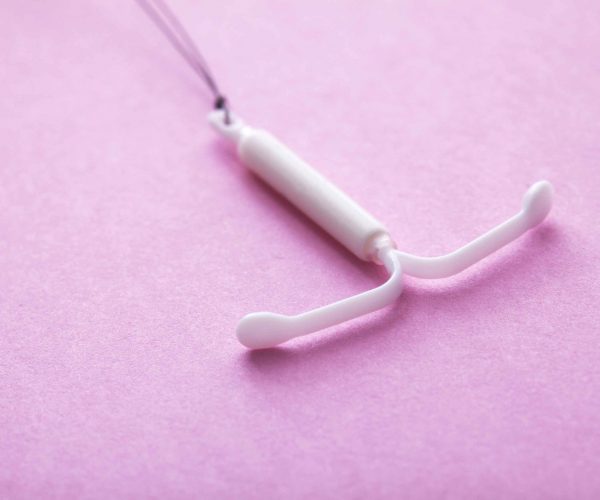What is a Mirena Coil?
A Mirena Coil is an Intrauterine system (IUS) and is a small, flexible plastic T–shaped device containing the progesterone hormone levonorgestrel. The IUS is used:
- As a method of contraception
- For the treatment of heavy periods
- To protect the lining of the womb during the menopause
How does it work?
It is inserted into the womb where it releases the hormone steadily over a five–year period or until it is removed. It works right where is needed and only very small amounts of hormone will enter your bloodstream. Ovulation (the release of an egg from the ovaries) usually continues while using Mirena.
Mirena – As treatment for heavy periods
The Mirena controls the monthly development of the lining of the womb, making it thinner so there is less bleeding every month.
- Long term, most women notice a marked reduction in their menstrual flow, and some women find their periods stop completely
- Two out of three women will avoid surgery such as hysterectomy
- Period pains are often reduced
- The IUS often helps with symptoms of premenstrual syndrome (PMS)
- Fibroids can occasionally shrink
Mirena – As contraception
- If inserted within seven days of the start of your period, the Mirena coil gives you immediate protection against pregnancy. If inserted after this time another contraceptive method is needed until the next period occurs.
- It works by thickening the cervical mucus so that it is difficult for sperm to get through to the egg.
- In some women it stops the ovaries from releasing an egg.
It keeps the lining of the womb too thin for implantation of a pregnancy - The IUS is more than 99% effective for five years. After this time a replacement Mirena coil will need to be inserted to maintain its contraceptive effect.
- Fertility returns to normal almost immediately after removal
- You can use it if breastfeeding Mirena
As Hormone Replacement Therapy (HRT)
- The Mirena replaces progestogen, the hormone no longer produced by your body at the time of menopause.
- The Mirena protects the lining of the womb from abnormal thickening which may rarely lead to cancer.
- Your gynaecologist may suggest you take oestrogen (another hormone) in addition to the Mirena coil if you have ongoing menopausal symptoms.
How do I know it has not fallen out?
You can check your coil yourself by feeling for the threads with your finger through the vagina. It is advised that you check on a monthly basis, this is particularly important after any heavy bleeding. You will be advised to see your gynaecologist about six weeks after insertion,
alternatively you may be asked to attend for a scan to check the coil is still correctly positioned.
What are the common side effects?
- Erratic bleeding for the first three to six months, this includes spotting and prolonged lighter periods. After this time period may stop totally.
- Spotting may occur.
- Occasionally breast tenderness can occur. Taking evening primrose oil may help Weight gain, headaches, nausea, acne and mood changes. Although these are common with all progestogen based treatments, the Mirena does not have a systemic affect and therefore they are less likely to occur.
Less common side effects
- Ovarian cysts
- Abdominal pain
- Bloating or swelling of legs or ankles
- Depression or nervousness or mood changes
- Abnormal vaginal discharge
What happens when you go to your appointment?
The IUS will be inserted by your specialist. This will involve using the same instrument used when having a smear. It is likely that you will experience some cramp like discomfort during the insertion, however this usually settles after the procedure. Very occasionally some local
anaesthetic can be used if insertion turns out to be difficult. The position of the coil may then be checked with an internal scan to confirm correct placement.
Risks of Insertion and immediately following
- Bleeding: some bleeding is common after the Mirena is inserted.
- Infection: the specialist will take swabs at the time of insertion and you will receive a letter approximately three weeks after your initial appointment with the results. If you suffer with an offensive discharge after insertion, please make an appointment to see your gynaecologist.
- Perforation: damage to uterus, this is extremely rare and your specialist will perform an ultrasound scan after insertion to ensure the Mirena is in the correct place. If you experience excessive pain it is very important to inform your gynaecologist.
How long does it last?
The IUS is licensed for five years. Your specialist may suggest you require removal of the existing coil and a replacement coil inserted, if your initial symptoms reoccur or if you are using the coil as a contraceptive.
How do I know it has not fallen out?
You can check your coil yourself by feeling for the threads with your finger through the vagina. It is advised that you check on a monthly basis, this is particularly important after any heavy bleeding. You will be advised to see your gynaecologist about six weeks after insertion,
alternatively you may be asked to attend for a scan to check the coil is still correctly positioned.
Dr Efterpi Tingi
Consultant Obstetrician and Gynaecologist



